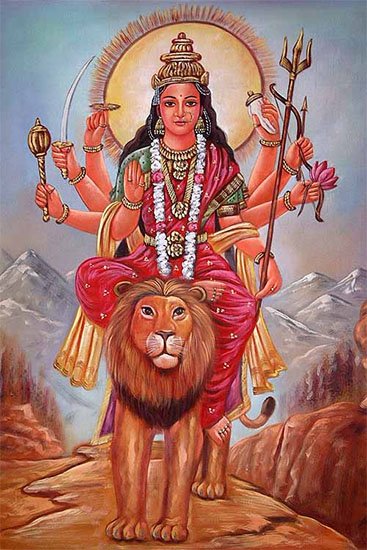Kramapada, Krama-pada: 5 definitions
Introduction:
Kramapada means something in Hinduism, Sanskrit, Jainism, Prakrit. If you want to know the exact meaning, history, etymology or English translation of this term then check out the descriptions on this page. Add your comment or reference to a book if you want to contribute to this summary article.
In Hinduism
Shaktism (Shakta philosophy)
Source: Google Books: ManthanabhairavatantramKramapada (क्रमपद) refers to the “(transcendental) plane of the Transmission”, according to the Manthānabhairavatantra, a vast sprawling work that belongs to a corpus of Tantric texts concerned with the worship of the goddess Kubjikā.—Accordingly, [while illustrating the composition of the Goddess’s body]: “[...] The other sixteen who move on the earth are famed as teachers in the Age of Strife. I am Vakrā who resides in the (teacher’s) mouth on the (transcendental) plane of the Transmission (kramapada). I am the unfailing and supreme Command. [...]”.

Shakta (शाक्त, śākta) or Shaktism (śāktism) represents a tradition of Hinduism where the Goddess (Devi) is revered and worshipped. Shakta literature includes a range of scriptures, including various Agamas and Tantras, although its roots may be traced back to the Vedas.
In Jainism
General definition (in Jainism)
Source: The University of Sydney: A study of the Twelve ReflectionsKramapada (क्रमपद) refers to “gradually” [?], according to the 11th century Jñānārṇava, a treatise on Jain Yoga in roughly 2200 Sanskrit verses composed by Śubhacandra.—Accordingly, “Being frightened by the deceit of the breath, the living embryo of men that is taken hold of by the fanged enemy that is destruction goes out like a young doe in the forest. O shameless one, if you are not able to protect this wretched [embryo] which is obtained gradually (kramapada—yadi kramapadaprāptāṃ) [by death] then you are not ashamed to delight in pleasures in this life”.

Jainism is an Indian religion of Dharma whose doctrine revolves around harmlessness (ahimsa) towards every living being. The two major branches (Digambara and Svetambara) of Jainism stimulate self-control (or, shramana, ‘self-reliance’) and spiritual development through a path of peace for the soul to progess to the ultimate goal.
Languages of India and abroad
Sanskrit dictionary
Source: Cologne Digital Sanskrit Dictionaries: Monier-Williams Sanskrit-English DictionaryKramapada (क्रमपद):—[=krama-pada] [from krama > kram] n. the conjunction of words in the Krama reading (more usually pada-krama), [Atharvaveda-prātiśākhya iv, 110. iv, 110.]
[Sanskrit to German]
Sanskrit, also spelled संस्कृतम् (saṃskṛtam), is an ancient language of India commonly seen as the grandmother of the Indo-European language family (even English!). Closely allied with Prakrit and Pali, Sanskrit is more exhaustive in both grammar and terms and has the most extensive collection of literature in the world, greatly surpassing its sister-languages Greek and Latin.
See also (Relevant definitions)
Partial matches: Krama, Pada, Pata.
Full-text: Para.
Relevant text
Search found 1 books and stories containing Kramapada, Krama-pada; (plurals include: Kramapadas, padas). You can also click to the full overview containing English textual excerpts. Below are direct links for the most relevant articles:
Cidgaganacandrika (study) (by S. Mahalakshmi)
Verse 36 [Power group of Śakti (Śaktivṛnda)] < [Chapter 2 - Second Vimarśa]